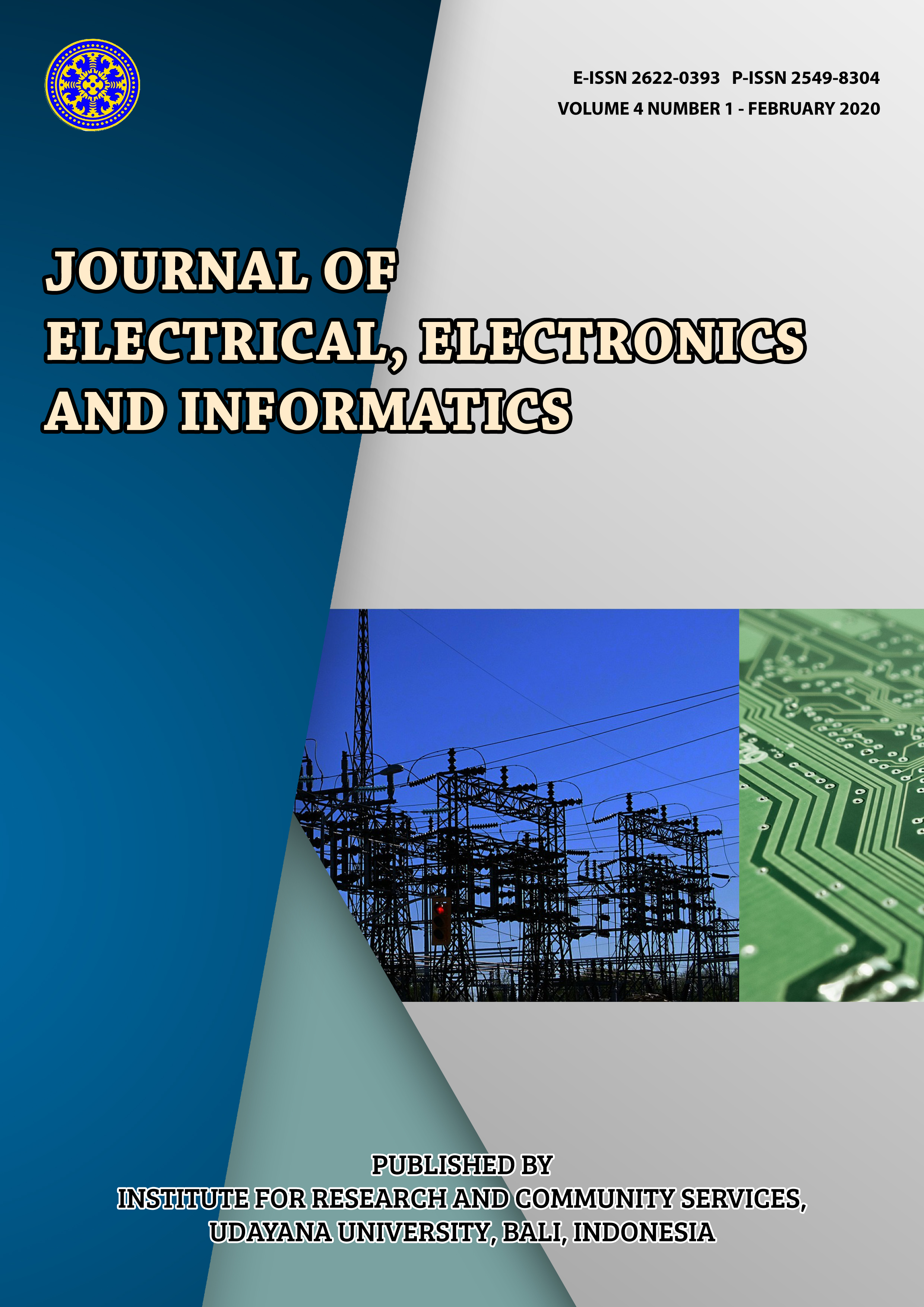Indonesian Alphabet Speech Recognition for Early Literacy using Convolutional Neural Network Approach
Abstract
Games are considered capable of being used as a learning medium that can help teachers to teach children how to pronounce the Indonesian alphabet in early literacy, we try to build one aspect of the game in this study. The approach we use is a speech recognition approach that uses the convolutional neural network method. The results of this study indicate that CNN can recognize speech, with input data is in the form of sound. We use the MFCC feature vector sound feature to make a 3-dimensional matrix of input sound into CNN input. We also use the Sequential CNN architecture made from a simple 10 layer neural network, which produces a model with a small size, approximately only about 6 MB, with high accuracy (84%) and an F-Measure of 0.91.
Downloads
References
[2] S. M. Westhisi, “Metode Fonik dalam Pembelajaran Membaca Permulaan Bahasa Inggris Anak Usia Dini,” J. Tunas Siliwangi, vol. 5, no. 1, pp. 23–37, 2019.
[3] S. P. Suggate, E. A. Schaughency, and E. Reese, “Children learning to read later catch up to children reading earlier,” Early Child. Res. Q., vol. 28, no. 1, pp. 33–48, 2013, doi: 10.1016/j.ecresq.2012.04.004.
[4] D. C. Castro, M. M. Páez, D. K. Dickinson, and E. Frede, “Promoting Language and Literacy in Young Dual Language Learners: Research, Practice, and Policy,” Child Dev. Perspect., vol. 5, no. 1, pp. 15–21, 2011, doi: 10.1111/j.1750-8606.2010.00142.x.
[5] A. Nurrahman, T. Wahyuni, and N. Thoyyibah, “Pelatihan Pengenalan Alfabet bagi Guru PAUD di Samigaluh Kulonprogo Alphabet Introductory Training for Early Child Teachers in Samigaluh Kulonprogo,” J. Millenn. Community, vol. 2, no. 1, pp. 33–37, 2020.
[6] Y. A. Makambahe, D. R. Kaparang, A. Mewengkang, P. Teknologi, and U. N. Manado, “PENGEMBANGAN GAME EDUKASI PENGENALAN HURUF BERBASIS AUGMENTED,” vol. 6, no. 3, 2018.
[7] E. Sinduningrum, R. Rosalina, and A. M. Hilda, “Pemanfaatan Teknologi Augmented Reality Untuk Media Pengenalan Huruf Alfabet Pada Anak Usia Dini,” J. SOLMA, vol. 8, no. 1, p. 142, 2019, doi: 10.29405/solma.v8i1.3151.
[8] A. Syukur and A. Fitra, “Game Interaksi Pengenalan Huruf dan Perangkaian Kata,” in Seminar Nasional Teknologi dan Multimedia 2017, 2017, no. 2017, pp. 7–12.
[9] Harvianto, L. Ashianti, Jupiter, and S. Junaedi, “Analysis and Voice Recognition in Indonesian Language using MFCC and SVM Method,” no. 2011, pp. 131–139, 1978.
[10] G. Kour, M. Tech, S. Rbiebt, N. Kharar, and A. Mehan, “Music Genre Classification using MFCC, SVM and BPNN,” Int. J. Comput. Appl., vol. 112, no. 6, pp. 975–8887, 2015, [Online]. Available: www.ijcaonline.org.
[11] D. C. Krishne and T. Hendrawati, “Klasifikasi Musik Latar untuk Aktivitas Balita menggunakan Metode MFCC, LVQ dan DTW,” J. S@cies, vol. 7, no. 1, pp. 42–46, 2016.
[12] I. D. G. Budi Dharma Prabhawa, D. Care Khrisne, and M. Sudarma, “Rancang Bangun Aplikasi Pengenalan Pupuh Bali Menggunakan Metode Mel Frequency Cepstral Coefficients,” J. Comput. Sci. Informatics Eng., vol. 3, no. 1, p. 75, 2019, doi: 10.29303/jcosine.v3i1.237.
[13] P. A. Wicaksana, I. M. Sudarma, and D. C. Khrisne, “PENGENALAN POLA MOTIF KAIN TENUN GRINGSING MENGGUNAKAN METODE CONVOLUTIONAL NEURAL NETWORK DENGAN MODEL ARSITEKTUR ALEXNET,” J. Spektrum, vol. 6, no. 3, pp. 159–168, 2019.
[14] T. Hendrawati, I. N. Sukajaya, and K. Y. E. Aryanto, “Automatic Image Annotation using Minimum Barrier Salient Object Detection and Random Forest,” in 2018 International Seminar on Intelligent Technology and Its Applications (ISITIA), 2018, pp. 305–310, doi: 10.1109/ISITIA.2018.8711110.
[15] D. C. Khrisne and I. M. A. Suyadnya, “Indonesian Herbs and Spices Recognition using Smaller VGGNet-like Network,” in 2018 International Conference on Smart Green Technology in Electrical and Information Systems (ICSGTEIS), 2018, pp. 221–224, doi: 10.1109/ICSGTEIS.2018.8709135.
[16] I. M. Wismadi, D. C. Khrisne, and I. M. A. Suyadnya, “Detecting the Ripeness of Harvest-Ready Dragon Fruit using Smaller VGGNet-Like Network,” J. Electr. Electron. Informatics, vol. 3, no. 2, p. 35, 2020, doi: 10.24843/jeei.2019.v03.i02.p01.
[17] TheBelajarIndonesia, “BelajarIndonesia: INDONESIAN ALPHABET,” YouTube, 2012. https://www.youtube.com/watch?v=kuzq4VKqXJM.
[18] TLIndonesian, “Indonesian Alphabet Pronunciation Guide,” YouTube, 2014. https://www.youtube.com/watch?v=RQ4M5-v6_JQ&feature=youtu.be.

This work is licensed under a Creative Commons Attribution-ShareAlike 4.0 International License.











